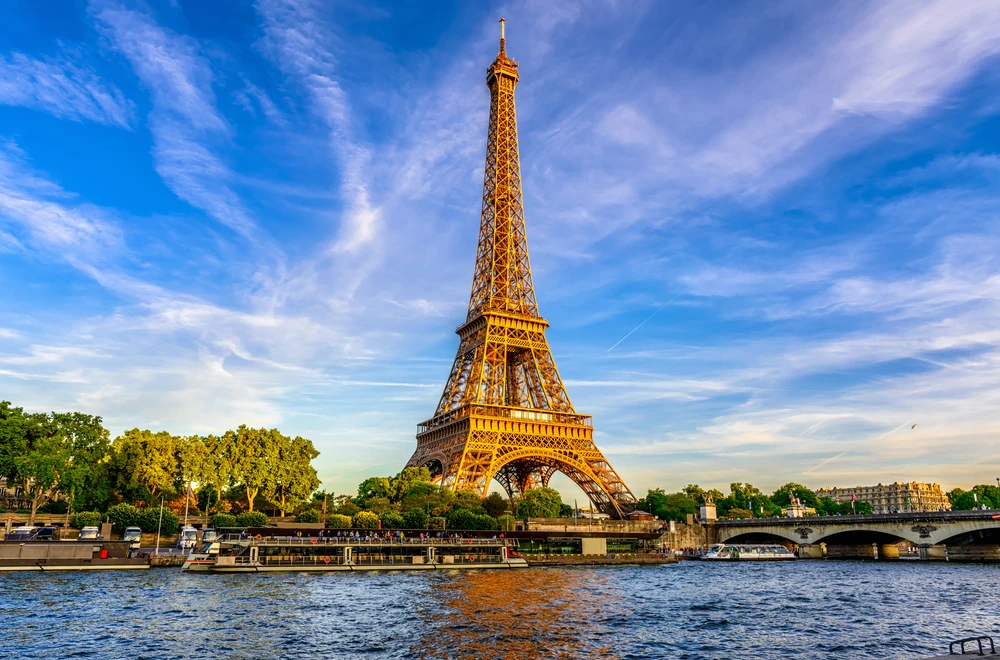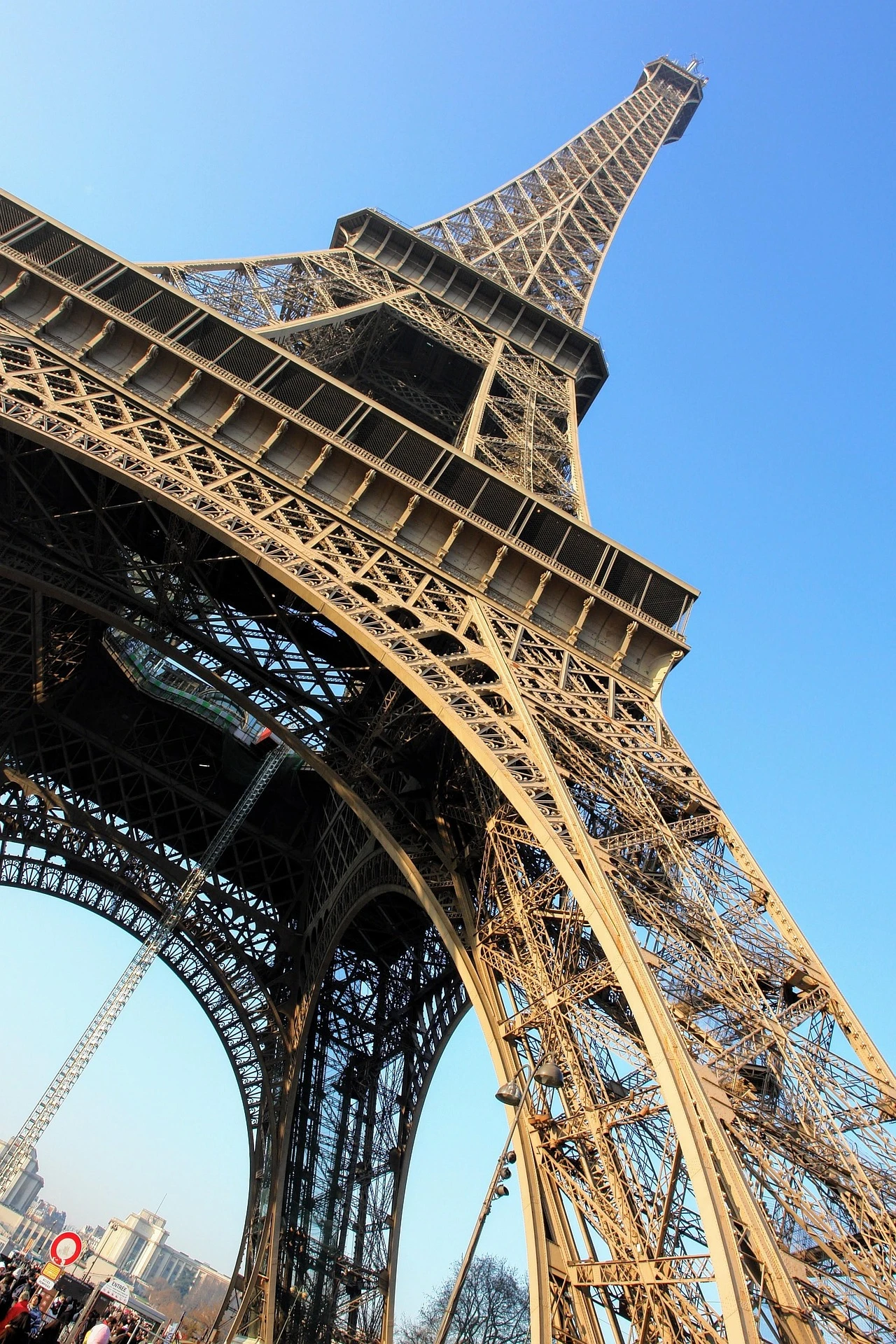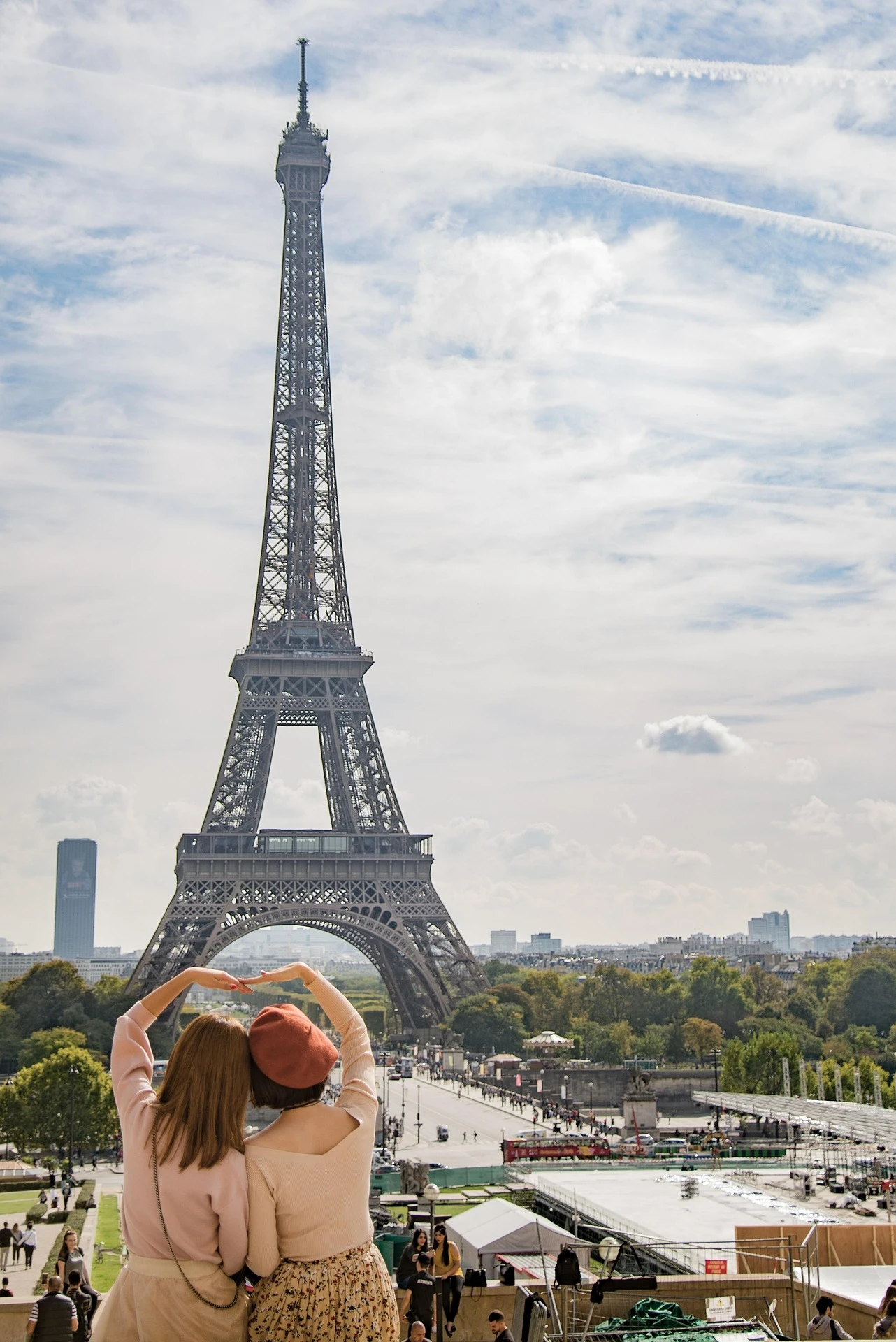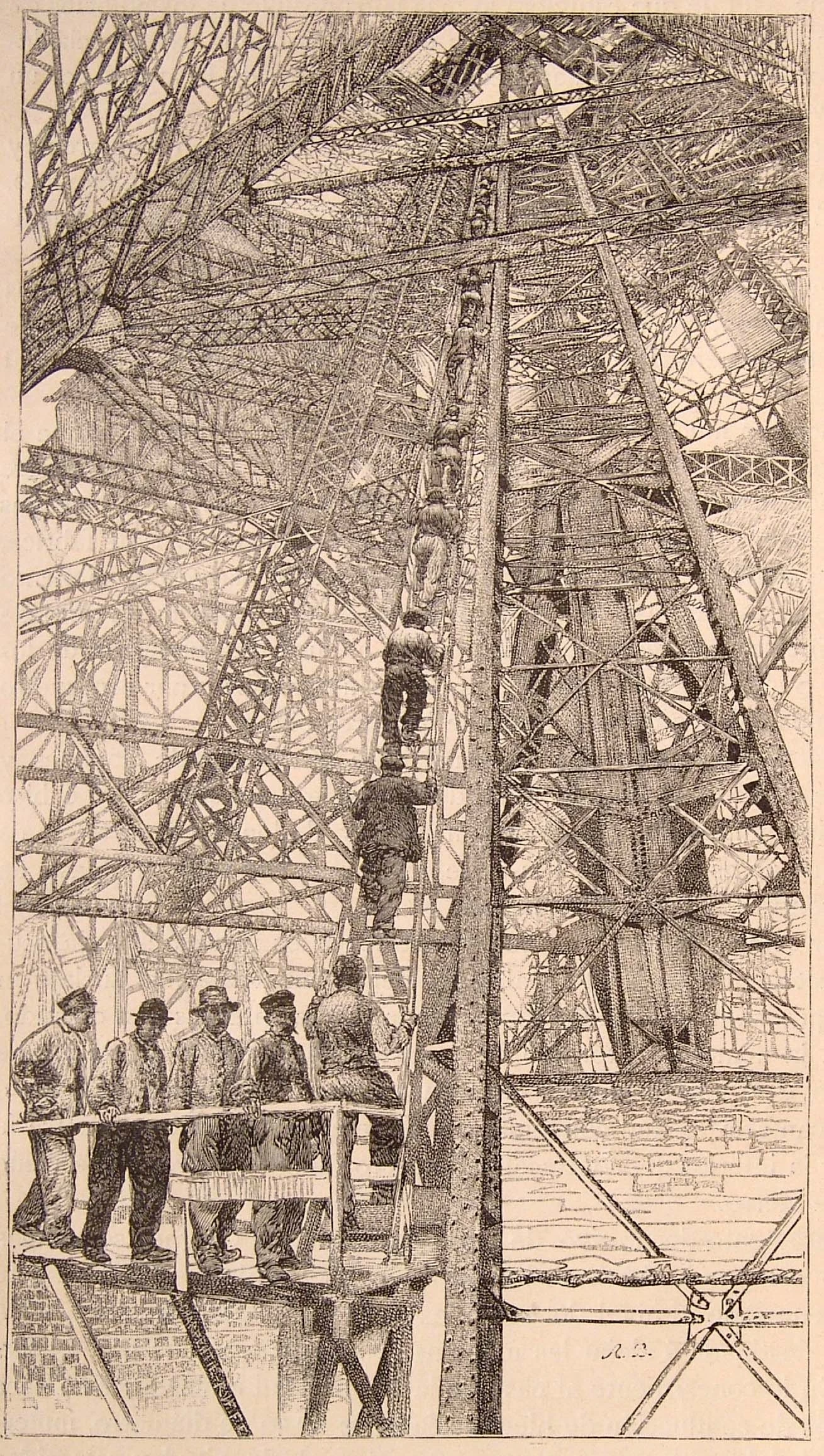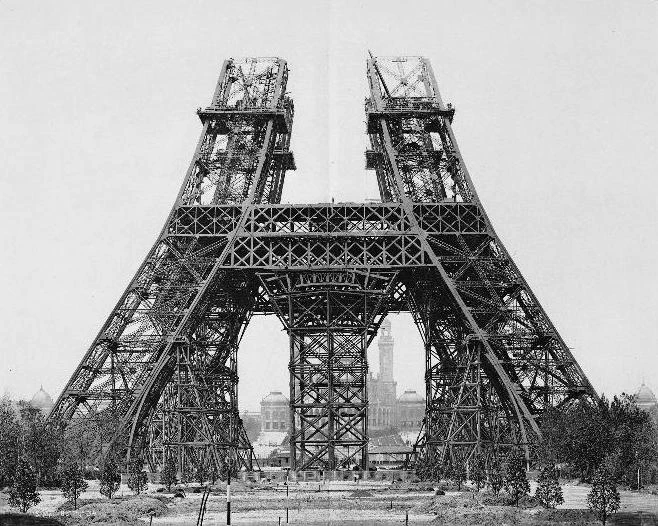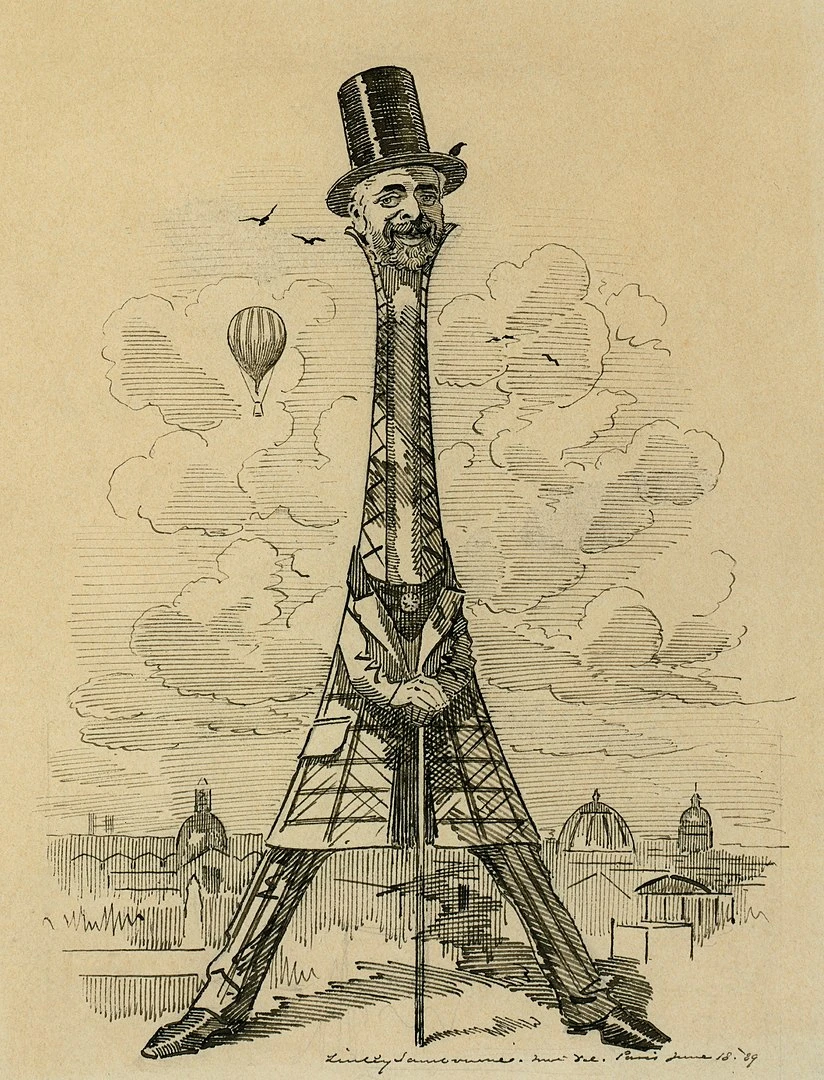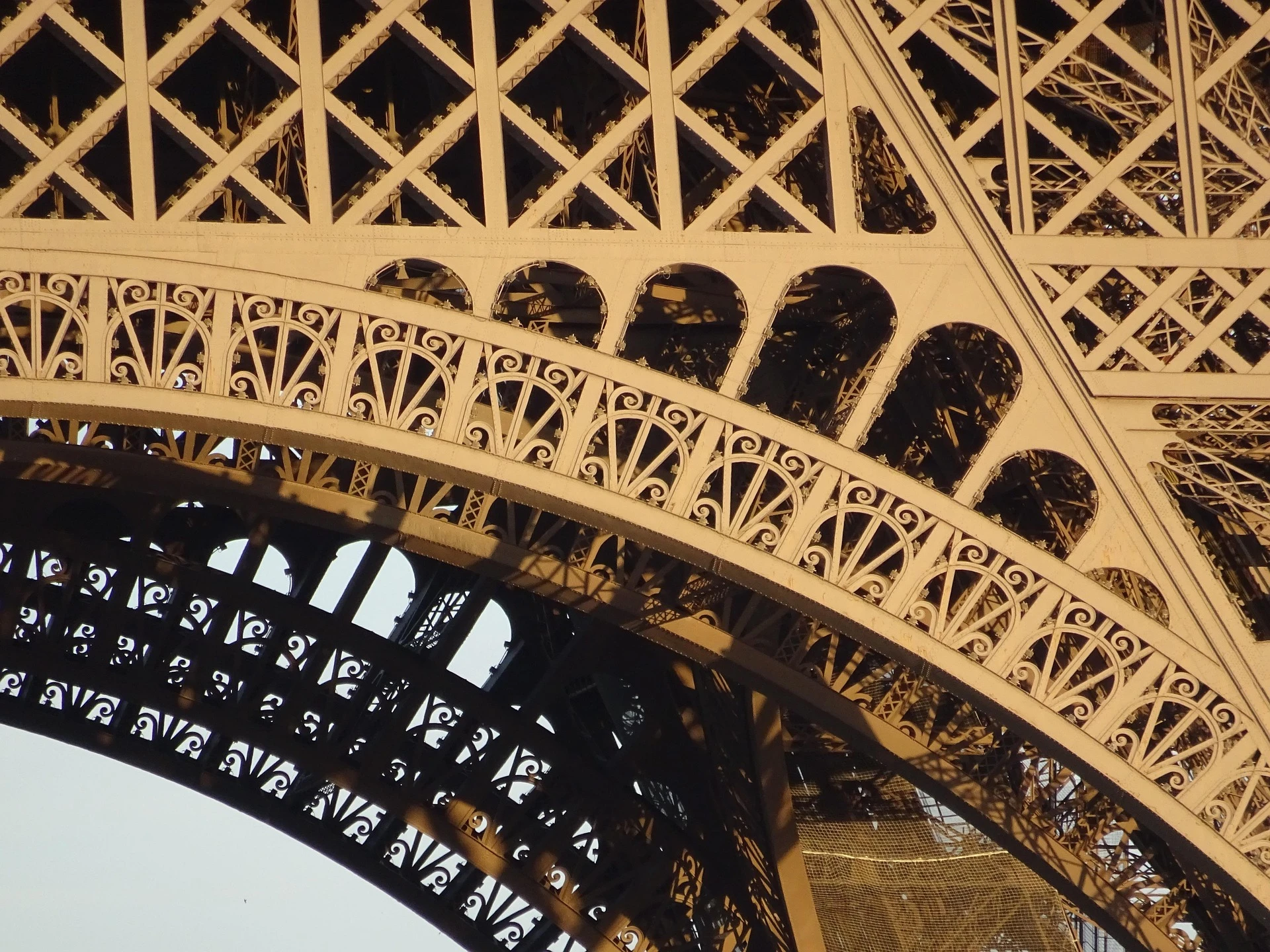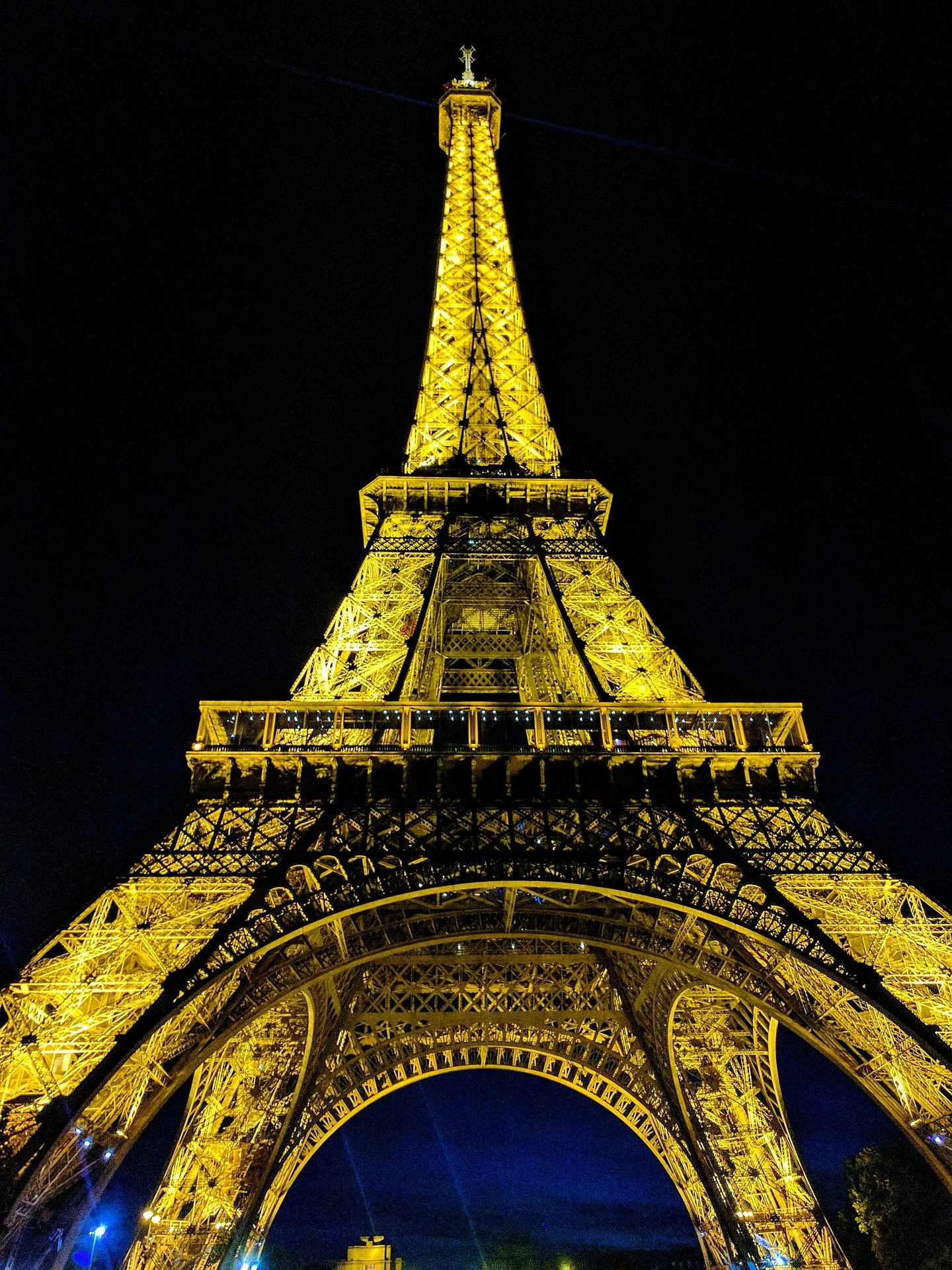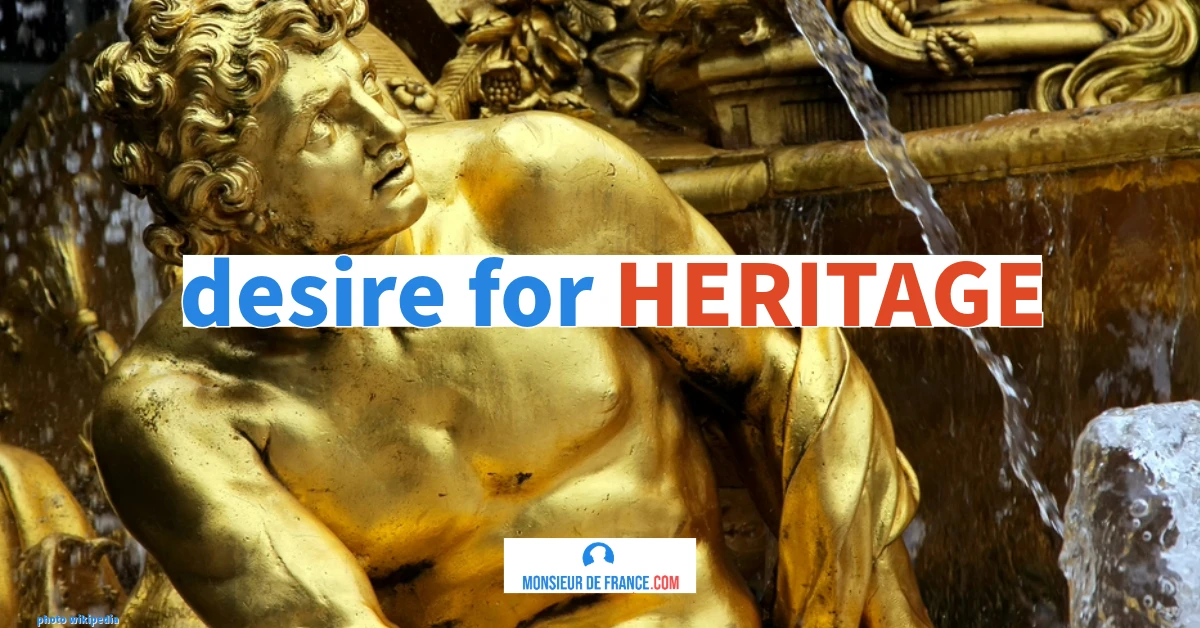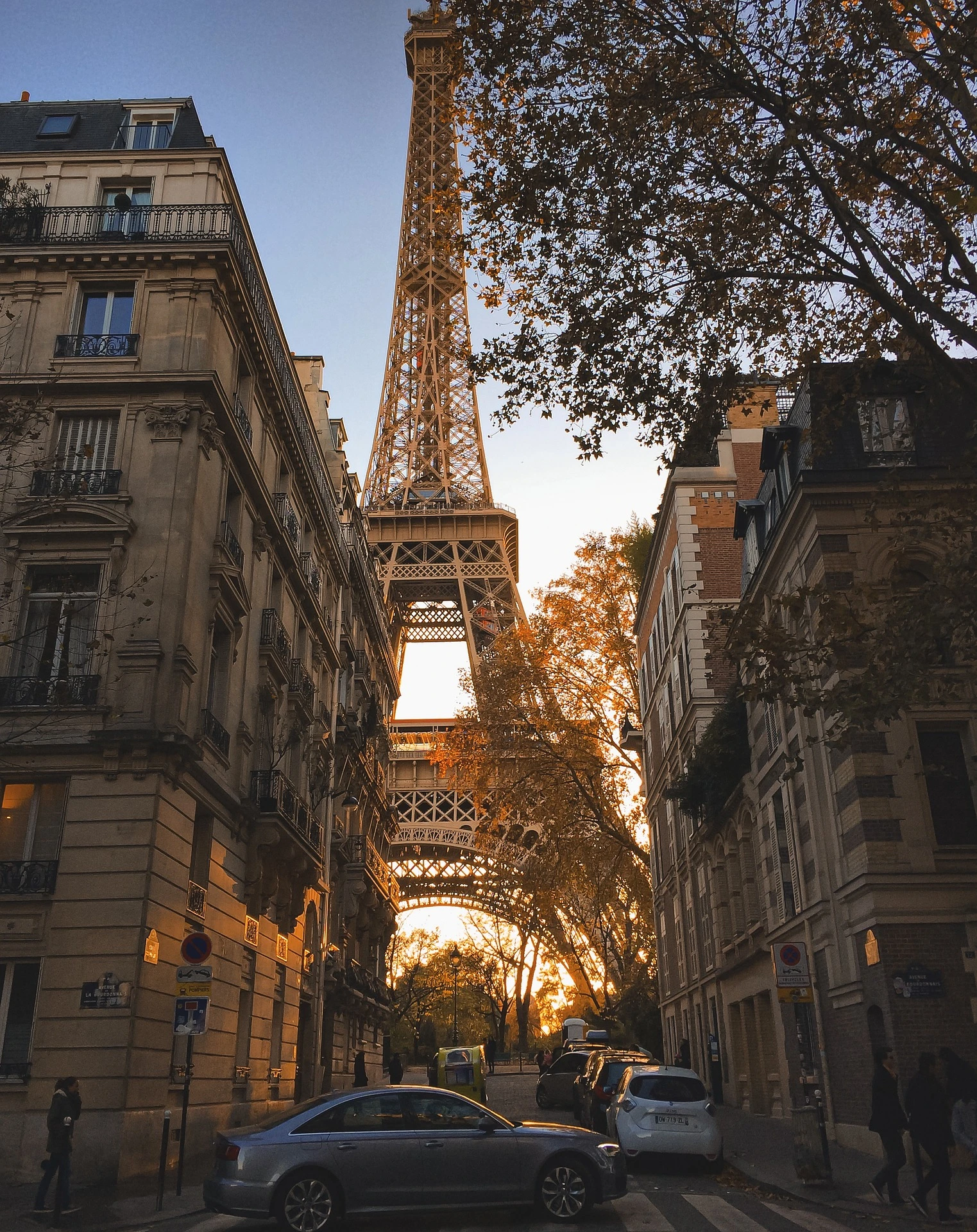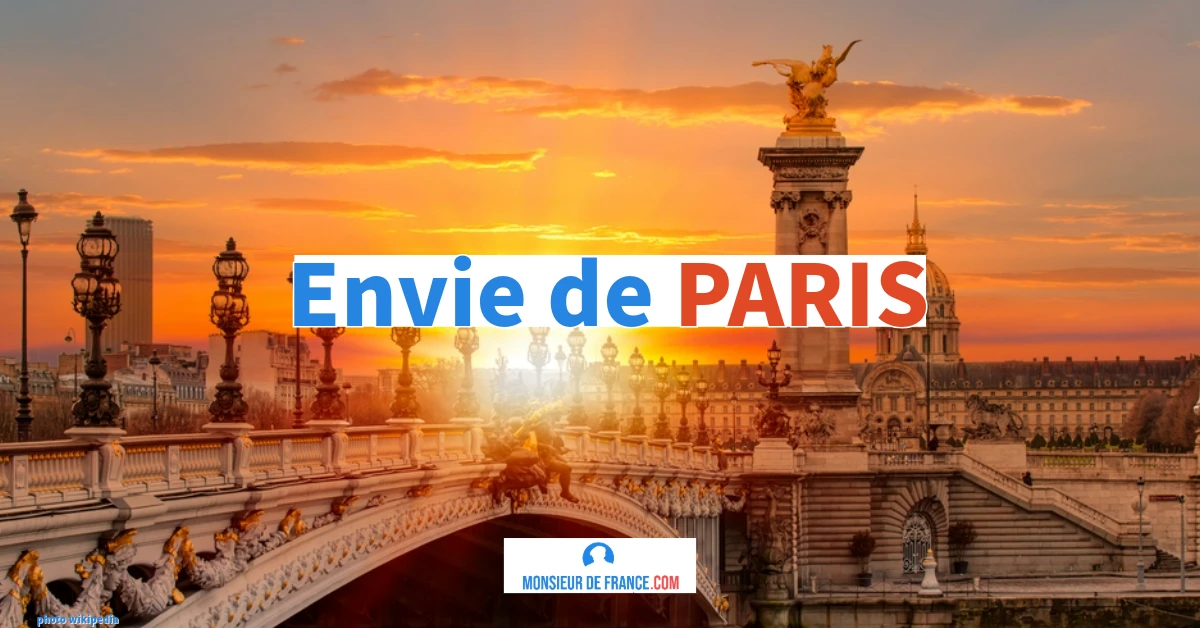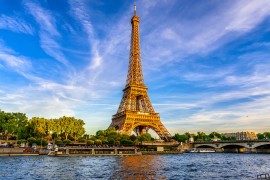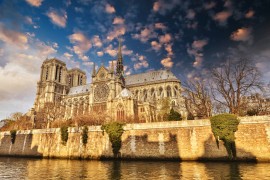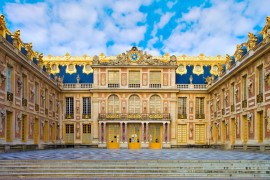In Paris, on the Champ-de-Mars, the Eiffel Tower rises from the ground like a steel streak of light. Standing 330 metres tall with its antenna, it dominates the city and embodies French savoir-faire. Built in just two years by engineer Gustave Eiffel and his teams, it is first and foremost a technical feat before becoming a world symbol. Every beam, every rivet tells of the audacity of the late XIXᵉ century: Paris dares metal and modernity.
La Tour Eiffel / photo Catarina Belova/Shutterstock.com
Even today, the Iron Lady seduces more than seven million visitors a year, coming from all over the world to contemplate its elegance and discover, from its floors, the most beautiful views of Paris: the Seine, the Trocadero, Montmartre or the Invalides sparkle before their eyes. When night falls, 20,000 lamps make it glow, transforming the tower into a beacon of the City of Light.
Eiffel Tower must-sees and must-dos
La Tour Eiffel / photo Peggy and Marco Lachmann-Anke de Pixabay
The forecourt and second floor: a living Paris
From the forecourt, the Champ-de-Mars perspective opens up majestically. The second floor, at 57 meters, offers a glass floor allowing you to walk above the void: thrill guaranteed! This is also the floor of Madame Brasserie, a contemporary restaurant where Parisian gastronomy meets the view of the Seine. Exhibitions retrace the construction of the tower, featuring models, period photos and a replica of Gustave Eiffel's office.
The second floor: postcards of Paris
At an altitude of 115 metres, the second floor reveals the most balanced view: high enough to embrace Paris, close enough to distinguish its monuments. The roofs of the Louvre, the dome of the Invalides and the dome of the Pantheon come into clear view. It's here that we understand why the Eiffel Tower remains the visual landmark of all Paris.
Always impressive:image by Rudy and Peter Skitterians de Pixabay
The summit: a dream at 300 metres
By elevator, we reach the summit and its champagne bar, perched at 276 meters. The wind blows, the city stretches out 360 degrees: an unforgettable view, from Montmartre to La Défense. Up there, we visit Gustave Eiffel's little private apartment, where the engineer received his guests, among them Thomas Edison. It's a page of history frozen high in the Paris sky.
The history of the Eiffel Tower
Workers at work / Illustration chosen by Monsieur de France: By Fondo Antiguo de la Biblioteca de la Universidad de Sevilla from Seville, Spain - Ascent of the workers to the Eiffel Tower., CC BY 2.0, https://commons.wikimedia.org/w/index.php?curid=51646523
A bet for the World's Fair
Gustave Eiffel and 1893 / source wikicommons
In 1886, a competition was launched to build a structure symbolizing French progress. Out of 107 projects, Eiffel's was chosen: a 300-meter iron tower.
Work began in 1887: 250 workers, millimeter calculations, 2.5 million rivets. In March 1889, the tricolor flag flew at the top. Paris enters the modern era.
From controversy to icon
The Eiffel Tower under construction/ illustration chosen by Monsieur de France: Public domain, https://commons.wikimedia.org/w/index.php?curid=598715
Long criticized, the Eiffel Tower had to be dismantled after twenty years. Eiffel saved it by installing telegraph and radio antennae. During the Great War, it transmitted military messages.
Little by little, it went from scandal to symbol. Artists adopted it, travelers loved it, filmmakers filmed it. It becomes the signature of the Paris skyline.
Caricature of Gustave Eiffel in an English magazine in 1889. Wiki commons.
The Eiffel Tower today
Restored, repainted and illuminated, the Iron Lady lives to the rhythm of the city. In 2000, its twinkling marks the new millennium; in 2019, a new antenna raises it to 330 meters.
Every evening, it lights up like a beating heart above the Seine.
3 tips for a successful visit to the Eiffel Tower
Detail of the Eiffel Tower/ photo chosen by Monsieur de France: by M_Horn71 from Pixabay
-
Book online. Time slots avoid queuing.
-
Come at dusk. The setting sun transforms the city into a golden map; the glitter begins just afterwards.
-
Prolong on the Seine. A cruise to the foot of the tower offers another magical viewpoint over Paris.
3 unusual anecdotes about the Eiffel Tower
- More than 700 marriage proposals take place on the tower every year.
- Eiffel had a secret apartment at the top to entertain Thomas Edison.
- In 1905, a man climbed the 1665 steps... on a bicycle!
The Eiffel Tower by night / Image selected by monsieurdefrance.com : by Stefano Vazzoler from Pixabay
Where to photograph the sparkling Eiffel Tower?
To photograph the Eiffel Tower as it sparkles is to capture the magic of Paris in motion. The best spot remains the esplanade du Trocadéro, on the square of the same name: facing the Seine, the Tower stands there unobstructed, and the golden reflection on the cobblestones adds a spectacular touch. Another must-see viewpoint: the Pont de Bir-Hakeim, made famous by numerous films. Its metal arches provide the perfect setting for a balanced composition between architecture and light. Finally, for a more intimate atmosphere, head for the Champ de Mars, at the very foot of the Tower. Here, we capture the dance of the bulbs above the trees, in a more peaceful and romantic setting. Three locations, three atmospheres, but the same thrill: that of the moment when Paris lights up and the Iron Lady shines with a thousand lights.
FAQ: everything you need to know about the Eiffel Tower
1. How to avoid queuing at the Eiffel Tower?
Buy your tickets in advance on the official website toureiffel.paris. Choose a time slot to avoid waiting. Early morning (before 10am) or late evening slots are the most fluid.
2. What time does the Eiffel Tower sparkle?
The Eiffel Tower twinkles every hour on the dot after sunset, for 5 minutes, thanks to 20,000 bulbs.
Since 2022, to save energy, the last twinkle takes place at 11:45 pm, followed by the complete extinction of the golden lights at midnight.
The spectacle remains one of the most photographed in Paris: at every hour, the entire city comes to a standstill to watch it shine.
3. Can we walk to the top?
No, the stairs stop at the 2ᵉ floor (that's about 700 steps). The elevator is mandatory to reach the top.
The walk up allows you to discover the puddled iron frame from the inside, a unique view of the gears and structure.
4. When is the best time to visit?
The morning (less crowded) or dusk, when Paris lights up, offer the most beautiful views.
Avoid midday or weekends if you want a little peace and quiet. In winter, the fog also lends a poetic atmosphere much appreciated by photographers.
5. Are there any restaurants in the Eiffel Tower?
Yes, two establishments:
- Madame Brasserie (1ᵉʳ floor), bistronomic and bright.
- Le Jules Verne (2ᵉ floor), starred gourmet restaurant.
Reservations are made directly via the official website to avoid scams or fake intermediaries.
La Tour Eiffel vue par Rodrigo Pignatta de Pixabay
6. Can we visit the Eiffel Tower at night?
Yes, the tower closes at 11:45pm in summer and 10:45pm in winter. Going up in the evening allows you to admire Paris illuminated and witness several twinkles from the floors.
The last ascent is allowed about 1 hour before closing.
7. Is the Eiffel Tower accessible to people with reduced mobility?
Yes, up to the 2ᵉ floor, thanks to adapted elevators and trained staff.
The summit is not wheelchair accessible.
PRM toilets and access ramps are available on every level open to the public.
8. How many visitors come each year?
On average, 7 million visitors climb the Eiffel Tower every year, making it the most visited paying monument in the world.
Visitor numbers vary according to the season: summer and Christmas are the busiest.
9. Why did the Eiffel Tower almost disappear?
It was due to be dismantled after 20 years, in 1909.
Gustave Eiffel saved it by installing a scientific laboratory and telegraph antennas.
It was thanks to this research that it survived and became a permanent monument.
10. What can you see from the Eiffel Tower?
From the top, you can see the dome of the Invalides, the Sacré-Coeur, the Louvre, Notre-Dame, and all the way to La Défense.
The 2ᵉ floor offers the most balanced viewpoint: Paris seems within reach, with its gray roofs and golden monuments.
Practical information
Adresse :
Champ-de-Mars, 5 avenue Anatole-France, 75007 Paris
How to find us :
- Metro: Bir-Hakeim (line 6), Trocadéro (line 9), École Militaire (line 8)
- RER: line C, Champ-de-Mars - Tour Eiffel station
- Bus : 42, 69, 82, 87
- Bicycles: Vélib' stations at the foot of Champ-de-Mars
- Boats: boarding at Port de la Bourdonnais
Hours:
Daily, 9:30 am to 11:45 pm (April-September), until 10:45 pm (October-March).
Last lift ≈ 1 h before closing.
Prices (2025)
Elevator to 2ᵉ: €18 (adult) | Staircase: €11.80 (adult) | Summit: + €10.
Free < 4 years.
⚠️ Buy tickets only on the official website: toureiffel.paris.
Beware of private resellers at the top of the search: inflated prices, invalid tickets.
Accessibility:
The tower is accessible to PRM up to the 2ᵉ floor; adapted elevators, PRM toilets, wheelchair loan.

